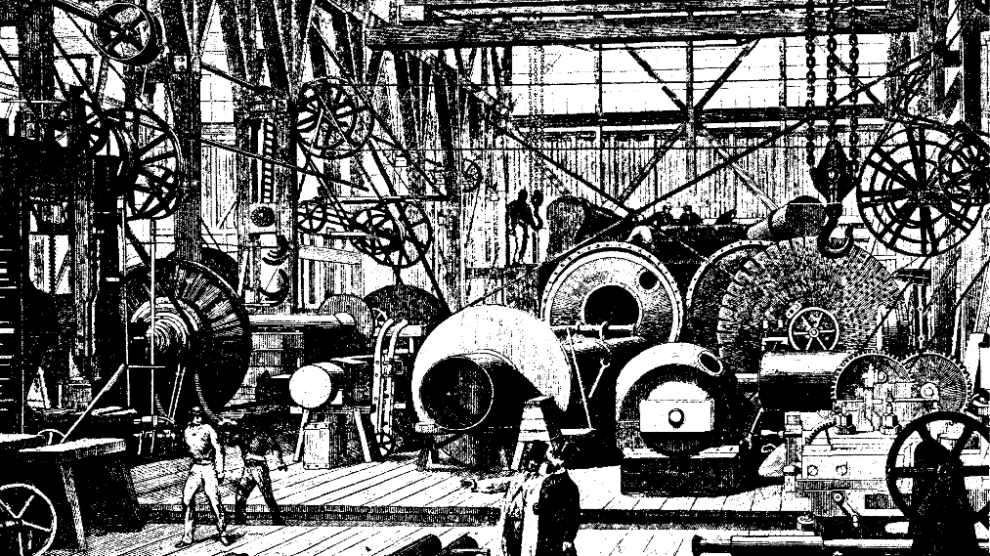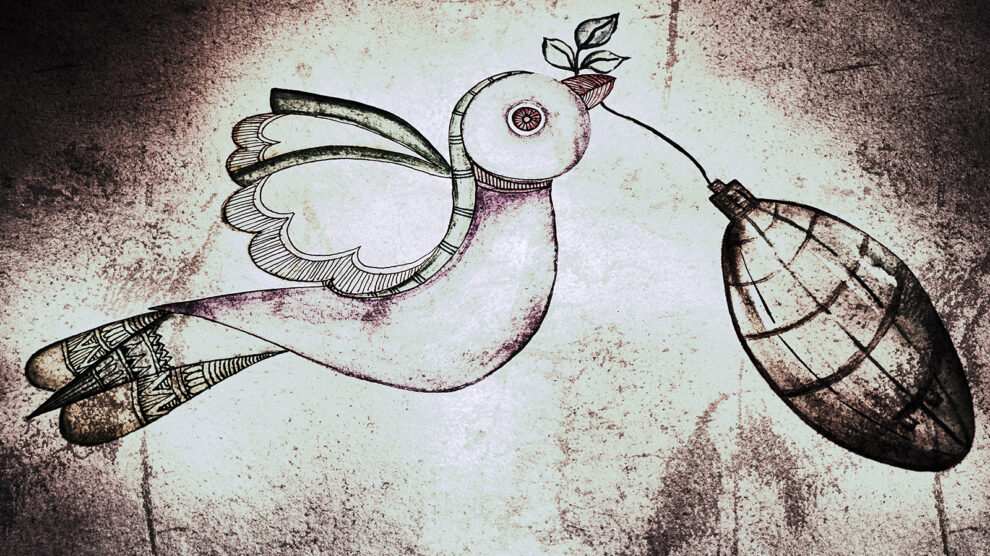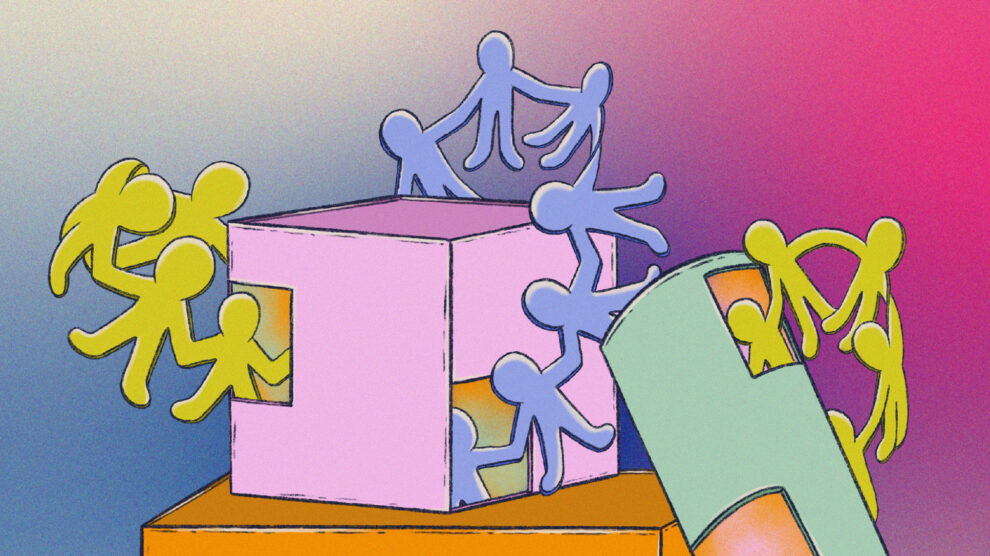Rereading China: Science Walks on Two Legs in 2021
Commentary on Science for the People, China: Science Walks on Two Legs
By Zuoyue Wang
“China is suddenly at the center of attention in the United States.” This could be a commonplace headline in American media outlets in 2020–2021, as the COVID-19 pandemic and domestic politics in both countries threatened to push the US-China bilateral relationship, widely regarded the most important in the world, toward an ominous breaking point. But it was in fact the opening sentence in China: Science Walks on Two Legs, a fascinating 1974 report by a group of young Americans on their month-long visit to China the year before, sponsored by the radical organization Science for the People (SftP) in the United States and the China Association of Science and Technology (CAST) in China. Reading it nearly a half century later one finds it timely, valuable, and stimulating as both a historical document and a commentary on science, society, and US-China relations.
One of the most striking features of the report was its confirmation of a sociological observation: travelers often bring their domestic concerns to bear on their experiences abroad. In the remarkable introduction to the report, the authors were explicit about their aim of looking at the Chinese experiment during their trip to help find solutions to intractable American problems: health insecurity despite medical advances; environmental pollution that accompanied industrialization and industrialized agriculture; and the militarization of science and technology. As an example of the last, the report pointed to the emergence of the computer as not only a “magical thinking machine,” but also as a tool in an unjust war in Southeast Asia and in the building of a domestic surveillance state. These ill effects of modernization, unfortunately, have not gone away since then.
Did the authors find what they were looking for in China? Seemingly they did: “Science in China, in its sense of systematically investigating and solving problems, is becoming the property of the entire people, and is integrating all problems into a scientific methodology: problems of production, technology, education, medicine, social relations, basic research, planning, and so on.” In other words, they saw an attempt at a “science for the people.” The authors then frankly and disarmingly acknowledged that “we believed what we saw and heard” not only because of their lack of facility with the Chinese language but also because of their “clear political bias,” meaning possibly that they wanted to believe what they saw.
The report presented several specific examples of how the mass science approach worked in China during the Cultural Revolution (1966–1976), not only in involving common people in science but also in convincing western-trained professional scientists to work with them on practical problems. One was the case of the geneticist Tan Jiazhen (Tan Chia-chen), who told the authors that working with peasants on projects such as crossing castor beans and cotton plants “made his own research more effective and beneficial.” Another case was that of the neuroscientist Zhang Xiangtong (Chang Hsiang-t’ung) who carried out scientific research on acupuncture—a “true people’s science” in the words of the authors of this report—in part to help treat people with deafness.
After the end of the Cultural Revolution, as we now know, many Chinese scientists would reveal its brutal, dark hidden side and repudiate their earlier accounts told to visiting foreign scientists. Tan, for example, would write that he had been forced to go to work with the peasants as a punishment for his refusal to support the idea of the proposed crossing, which he said he knew “ignored the most basic common sense.”1 Zhang, however, recalled his acupuncture research in a more positive light, although he did not mention its use as a treatment for deafness in his memoir.2
After the end of the Cultural Revolution, as we now know, many Chinese scientists would reveal its brutal, dark hidden side and repudiate their earlier accounts told to visiting foreign scientists.
At this point, it might be appropriate to share some personal experiences to illustrate the complexity of the subject matter tackled bravely by the authors of the report, especially the politics of science and education in modern China. In 1973, when the SftP group visited China, I was a ten-year-old boy living in one of the rural communes (Sanyang Commune in Wuzhi County, northern Henan Province). If I had read the two brief reports about their visit in the People’s Daily—on a February 23 banquet given them by the physicist Zhou Peiyuan (Chou P’ei-yüan) as CAST vice president, and then another one on a March 2 meeting they had with Liu Xiyao (Liu Hsi-yao), a science administrator—they did not make a deep impression on me. What did was the visit of President Richard Nixon the year before. I still remember a card game we played as kids during that period where we called the most powerful card the “Nixon” (and the second most powerful the “Kissinger,” after his national security advisor Henry Kissinger).
More substantively, Nixon’s visit led to the teaching of English as part of my junior high school curriculum, which, in retrospect, paved the way for my eventual journey to the United States for graduate study in 1986. But that path was almost derailed in 1976, when “revolutionary” educational reforms during the Cultural Revolution, as described in the SftP’s report, led to the selection of students for my commune’s high school based on political “recommendations” instead of academic performance. So as a result, even though my mom had been repeatedly assured by officials that as the top graduate of my junior high I would be guaranteed a place in Sanyang High School, she learned to her dismay that I was still bumped off in favor of someone else with political connections. Luckily for me she had a distant cousin who was a cadre in the commune, so she appealed to him on account of my academic record. In the end, my name was “penciled” in, with black brush strokes, on the printed list of admissions posted publicly on the wall at Sanyang High School.
Luckily again for me, 1976 was the last year of the Cultural Revolution. By the time I graduated high school in 1978, universities in China had already started admitting students based on exams instead of recommendations. I entered the nearby Xinxiang Normal College to study physics, and then in 1982 I went to Beijing to study the history of physics, as part of a class of three, at the Graduate School of the Chinese Academy of Sciences. There I learned much about what happened to scientists during the Cultural Revolution from our distinguished Committee of Academic Advisors. Among its seven scientist members, “five and a half” had been purged as “rightists” for voicing criticisms of the Chinese Communist Party in 1957. The five included Prof. Xu Liangying, a physicist who was exiled back to his hometown in Zhejiang Province for physical labor and who suffered inhuman treatment during the Cultural Revolution. At its height in 1968, Xu almost died from a suicide attempt as a protest against a planned mass rally where he was going to be forced to kneel on the ground. But he survived and actually was able, together with several others, including Prof. Fan Dainian (another one of “the five”) to translate and edit three volumes of Albert Einstein’s writings into Chinese, covering not only physics but also philosophy and politics.3
The “half” was Prof. Fang Lizhi, who was not a full-blown “rightist” like Xu (or Fang’s physicist wife Li Shuxian at Peking [Beijing] University) but was expelled from the Chinese nuclear weapons project in 1957 and from the Chinese Communist Party in 1958. During the Cultural Revolution Fang was forced to undergo “re-education” in the form of hard labor in an underground coal mine. Miraculously he somehow managed to find a copy of the Soviet physicist Lev Landau’s Classical Theory of Fields, which he furtively read at night inside a mosquito tent. Thus did Fang become the future leading Chinese astrophysicist.
When the SftP delegation visited China in 1973, they were of course not allowed to meet with Xu, Fang, or thousands of other scientists/academics who were designated as class enemies of the people. Thus one would, unfortunately, not read in China: Science Walks on Two Legs about their experiences or those of millions of other ordinary non-scientist Chinese who suffered during the Cultural Revolution because they were born into the wrong kinds of families, lacked the right political connections, or had overseas relatives.
Nor did these Americans get to meet with those like Wang Ganchang, Xu’s old physics professor and a major architect of the atomic bomb project, who worked in the defense technology sector that did not always practice mass science. In 1958, during the Great Leap Forward movement which, in many ways, anticipated the Cultural Revolution, Qian Xuesen (H. S. Tsien), an eminent aerodynamicist who had recently returned from the United States, actively participated in the mass movement to eradicate sparrows in the streets of Beijing. He did so in part in response to the criticisms that he, as the director of the Institute of Mechanics in the Chinese Academy of Sciences, did not mingle with the common people. Once the top party-state leadership learned of this, it sent a stern admonition to the party officials in the institute: There was more important work for Comrade Qian Xuesen (building missiles) than catching sparrows with the masses.4
Despite its admittedly partial nature, China: Science Walks on Two Legs still stands as a valuable record in regard to science and scientists in the early 1970s at a critical and exciting moment of mutual discovery in US-China relations.
But in 1978, when SftP sent its second group to visit China, it was politically imaginable for them to meet Xu, Fang, or other Chinese dissident intellectuals, who were now rehabilitated professionally and whose continuing, deepening questioning of Chinese political orthodoxy was still officially tolerated.5 It’s unfortunate that disagreements over how to assess the political changes in China during that critical juncture prevented the group from recording their observations in a second report—it would have been a valuable historical document like this one.
By the late 1980s, Xu and Fang would be regarded as prominent political dissidents in China, with Fang widely known as the “Sakharov of China,” after the prominent Soviet nuclear physicist-turned human rights activist Andrei Sakharov. In the aftermath of the 1989 Tiananmen crackdown on pro-democracy protesters, Fang and Li sought refuge in the US embassy in Beijing, where Fang penned his memoir, including the dark days of the Cultural Revolution. It was published in 2016 in English under the title The Most Wanted Man in China.6 A year later they were allowed to leave for England; they eventually settled in Tucson where Fang taught physics at the University of Arizona.
In 2008 after being nominated by Prof. Fang and others, Prof. Xu was awarded the Sakharov Award by the American Physical Society for his own human rights activities. By then I had received my PhD from the University of California, Santa Barbara, with a thesis on the history of the US President’s Science Advisory Committee, and started teaching American history and the history of science at the California State Polytechnic University, Pomona.7 Because Prof. Xu could not travel outside of China due to health reasons, I had the honor of delivering the awardee’s lecture at the APS’s meeting in St. Louis. I have often wondered how SftP members, especially those who had a chance to travel to China in 1973 or later, thought of Fang Lizhi, Xu Liangying, and the Chinese politics of science after the Cultural Revolution.
Back to the book: despite its admittedly partial nature, it still stands as a valuable record in regard to science and scientists in the early 1970s at a critical and exciting moment of mutual discovery in US-China relations. It can be read in conjunction not only with later accounts by Chinese scientists themselves, but also with those of other American scientists with varied political orientations who made their way to China in this period as well. These included those sponsored by the politically liberal/centrist Federation of American Scientists (FAS), the various largely disciplinary delegations organized by the semi-official US Committee on Scholarly Communications with the People’s Republic of China (CSCPRC), and the large number of ad hoc groups of Chinese American scientists who returned to their homeland for the first time in about a quarter century.8
The US-China people-to-people interactions, which this book exemplified, have now been hampered not only by rising bilateral geopolitical tensions, but also by the deadly COVID-19 pandemic that has reduced human movements between the two countries to a small fraction of its prior scale, at least temporarily.9 Following a historical pattern, Chinese Americans felt the pressure from mounting US-China conflicts, as the US government, amidst criticism of racial profiling, investigated a number of Chinese American scientists for alleged economic espionage, among other charges, and as hate crimes against Asian Americans increased after the onset of the pandemic.10
It is perhaps inevitable that the shifting US-China relations at the present also affect the perspective with which we might approach a historical document like this book. In calmer days we could have, for example, focused much more on the political dimensions of the book, analyzing similarities and differences in views between the young American visitors and their hosts in China, and even between groups within each country, such as SftP and the FAS in the United States, or the young peasant technicians and western-trained professional scientists in China. Now, given the dire state of US-China relations, perhaps the more salient feature of the book is the fact that the trip it narrated took place at all. Will we end up needing to retrace the steps of its authors in another process of rediscovery if US-China relations continue to worsen for a long time to come? Let’s hope that it will not come to that. After all, US-China scientific interactions matter to everyone; many global problems, including public health threats and the climate change crisis, will not be solved without cooperation between the two largest economies in the world.
Back to Table of Contents
Notes
- Tan Jiazhen, Shengming de mima (The Secret Code of Life) (Changsha: Hunan Children’s Press, 2000), 118.
- Zhang Xiangtong, Lingxing de wangguo (The Realm of Spirituality) (Changsha: Hunan Children’s Press, 2000), 130.
- For more on Xu and the politics of science in modern China, see, e.g., H. Lyman Miller, Science and Dissent in Post-Mao China (Seattle: University of Washington Press, 1996), and Miller, “Xu Liangying and He Zuoxiu: Divergent Responses to Physics and Politics in the Post-Mao Period,” Historical Studies in the Physical and Biological Sciences 30, no. 1 (1999): 89-114.
- Xi Qixin, Qian Xuesen zhuan (a biography of H. S. Tsien) (Beijing: People’s Press, 2011), 319. See also Iris Chang, Thread of the Silkworm (New York: Basic Books, 1995), 238.
- No evidence has been found so far that they actually met, and a delegate does not recall meeting them (personal communication).
- Fang Lizhi, The Most Wanted Man in China: My Journey from Scientist to Enemy of the State, translated by Perry Link (New York: Henry Holt, 2017).
- In 2011, when my book In Sputnik’s Shadow: The President’s Science Advisory Committee and Cold War America (New Brunswick, NJ: Rutgers University Press, 2008) was prepared for a Chinese edition, the Chinese publisher (Peking University Press) requested that the mention of Fang be deleted from my acknowledgements in the book, but reluctantly allowed Xu’s name to stay.
- For some relevant studies see Zuoyue Wang, “US-China Scientific Exchange: A Case Study of State-Sponsored Scientific Internationalism during the Cold War and beyond,” Historical Studies in the Physical and Biological Sciences 30, pt. 1 (1999): 249-277; Sigrid Schmalzer, “Speaking about China, Learning from China: Amateur China Experts in 1970s America,” Journal of American-East Asian Relations 16, no. 4 (winter 2009): 313-352; and Pete Millwood, “An ‘Exceedingly Delicate Undertaking’: Sino-American Science Diplomacy, 1966-1978,” Journal of Contemporary History 56, no. 1 (January 2021): 166-190.
- David Sanger and Michael Crowley, “A Pivotal Reset on China Policy by Biden’s Team,” New York Times, March 18, 2021, A1.
- Jeffrey Mervis, “U.S. Scientists Want Congress to Look into Complaints of Racial Profiling in China Initiative,” Science, www.sciencemag.org, February 5, 2021. To his credit President Biden spoke out much more forcefully against anti-Asian racism than his predecessor who was widely criticized for his repeated use of the term “China virus.” See Joseph R. Biden, “Memorandum Condemning and Combating Racism, Xenophobia, and Intolerance against Asian Americans and Pacific Islanders in the United States,” January 26, 2021, www.whitehouse.gov, and New York Times Editorial Board, “Asian Americans Are Scared for a Reason,” New York Times, March 18, 2021. See also Zuoyue Wang, “Chinese American Scientists and U.S.-China Scientific Relations: From Richard Nixon to Wen Ho Lee,” in The Expanding Roles of Chinese Americans in U.S.-China Relations: Transnational Networks and Trans-Pacific Interactions, ed. Peter H. Koehn and Xiao-huang Yin (New York: M. E. Sharpe, 2002), 207-334.





